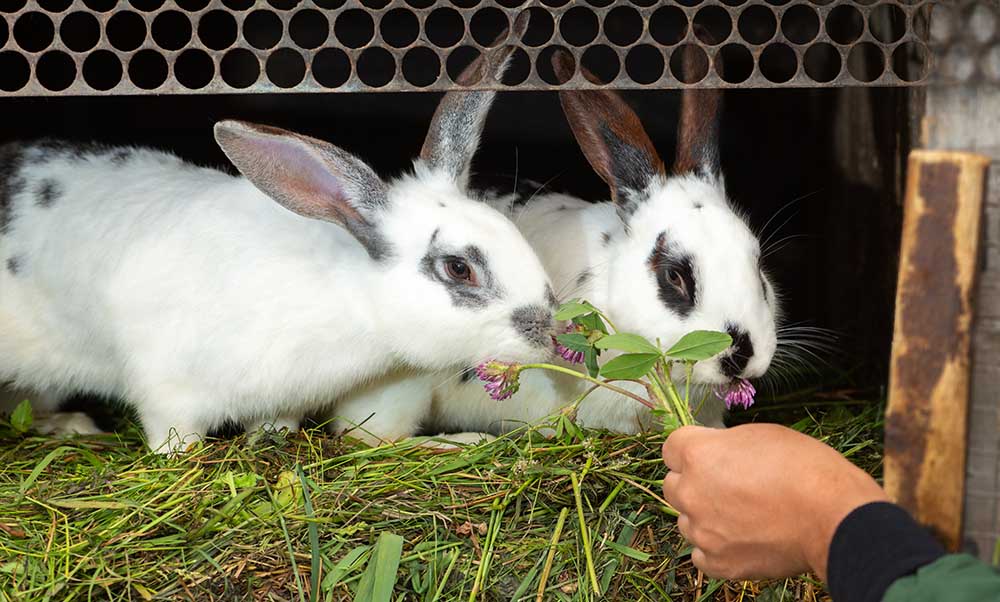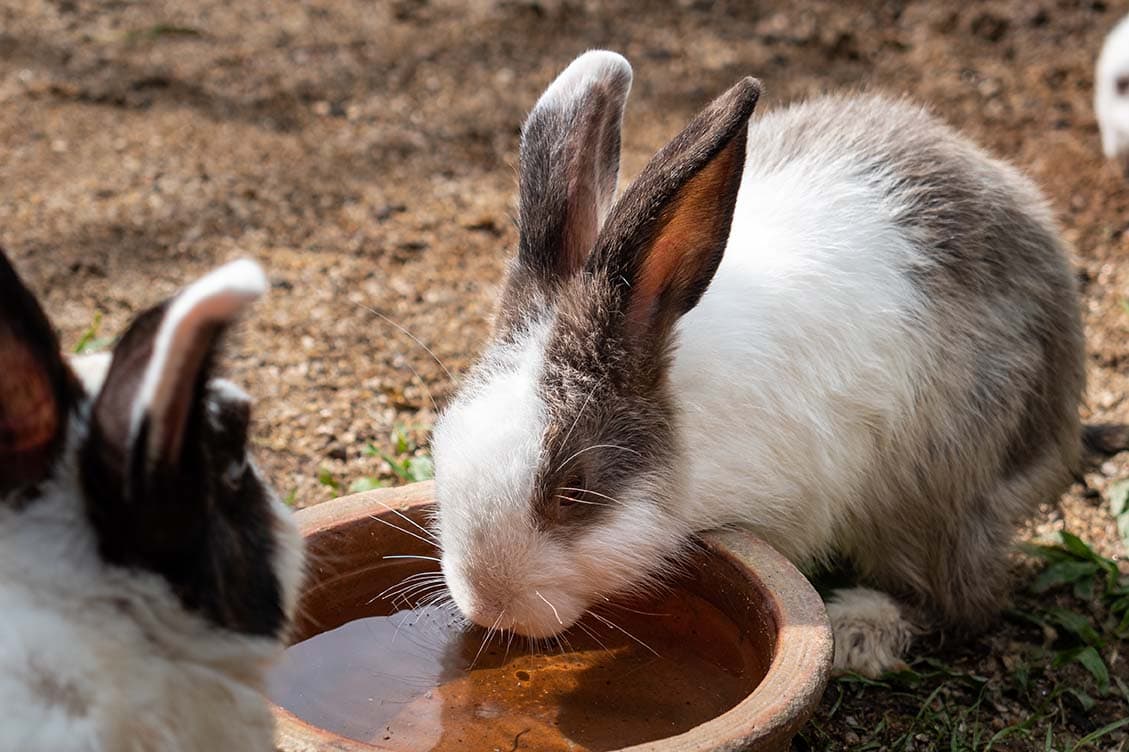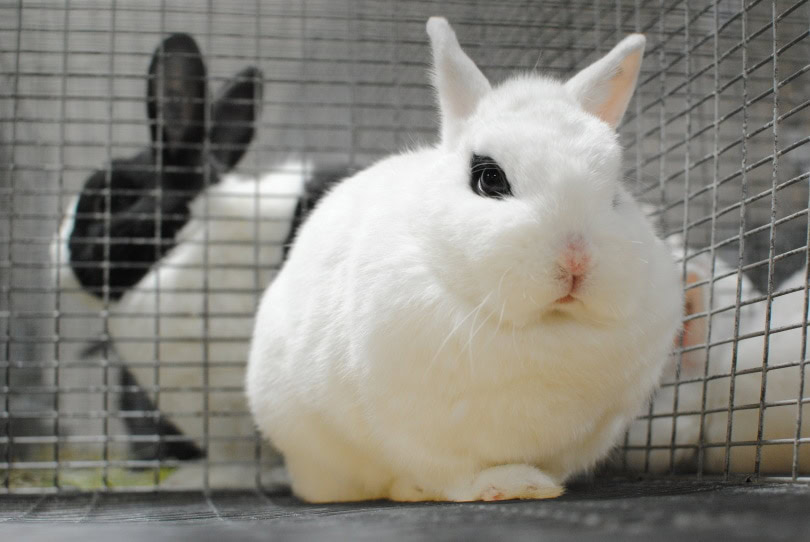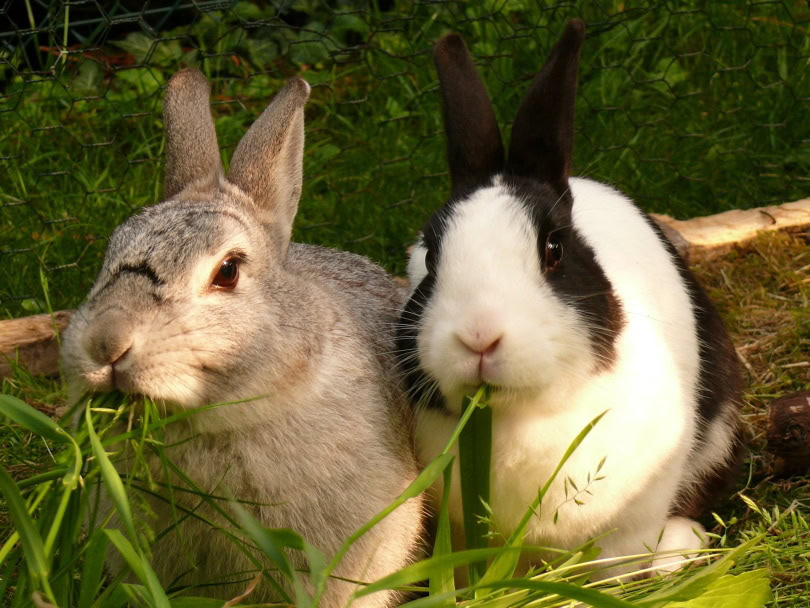Click to Skip Ahead
Rabbits are sociable animals that enjoy living in pairs or as part of a group. In the wild, they live in large numbers, so most domestic rabbits also prefer the company of other rabbits rather than being kept alone. You can keep any combination of sexes, including two male rabbits, together. However, taking certain steps will help ensure a more successful introduction and bonding.
Domestic pets tend to live in close proximity. While wild rabbits have opportunities to spread out, this is not an option for two or more rabbits living in a relatively confined hutch. If one of the rabbits becomes aggressive, the other rabbits won’t be able to get away.
Let’s take a closer look at the effects of having two male rabbits cohabitate.

Keeping Rabbits Together
Keeping rabbits together can save you and your belongings. Since they are sociable animals, rabbits get easily bored when left alone and to their own devices. In your home, this can lead to the chewing of wires or other items and even the walls and furniture. A rabbit can make surprisingly short work of the back of a settee!
It might seem like keeping two rabbits would double the destruction, but since they’ll have company and thus something other than the furniture to entertain them, keeping multiple rabbits may prevent them from chewing your stuff.

Friendliness
Rabbits usually get along well. This is especially true of siblings and rabbits from the same family group.1 They already have a bond, and bringing two rabbits home that grew up together usually gives the best results in terms of them having a close relationship with one another. It is worth pointing out that their being siblings will not prevent a male and female from mating, so you will need to have them neutered.
Social Bonds
A rabbit can form a close bond with another rabbit. This most often happens when they have known each other their whole lives or for a long period. It typically means that the two will get along and not fight. However, this bond is tough to break and can cause problems for those who want to introduce new rabbits later.
If you have two bonded rabbits, adding a third means that the original pair may reject the third rabbit. At best, this means that they will ignore the new addition. At worst, they can become aggressive and physically pick on your new rabbit. Introduce new rabbits to existing pairs and groups slowly, and be prepared to intervene if there is any sign of aggression.

Keeping Males Together
Not only is it possible to keep two male rabbits together, but it could benefit them. It can provide social or familial links, prevent them from getting bored, and even provide you with a means of teaching a young rabbit to be sociable and better behaved, as you can introduce them to an older rabbit that likes to be handled and enjoys spending time with you.
You should remember that while rabbits are cute and cuddly, they are still animals. They can be competitive, and this competitive nature can manifest as aggression and in other negative ways. One rabbit may dominate the food and prevent the other from eating, or one may attack the other rabbit.
There are ways to facilitate a less aggressive introduction, however.

The 5 Steps to Introduce Two Male Rabbits
1. Get Them Neutered
A lot of aggression between rabbits is caused by hormones. By eliminating hormones, it is possible to greatly reduce aggression between them. Also, incorrect sexing does occur, as it is difficult to tell male and female rabbits apart when they are young. By neutering, you can avoid accidental and unwanted pregnancies. Before attempting to introduce two rabbits, ensure that they are neutered.
2. Have Two Separate Cages
Over time, you will want your rabbits to live together in the same hutch, but just putting them in a confined space and leaving them to it is not the best method of introduction. Have two cages set up, and ensure that both cages have good bedding, bowls, and all other accessories and requirements.

3. Put the Cages Together
Once you have both cages set up, place them next to one another. They should be close enough that the rabbits can smell and even see one another. You can place them side by side, with a wired section between them. This will allow them to closely sniff one another if their relationship reaches this stage.
4. Know When It’s Time for Introductions
Once your rabbits have had the opportunity to get used to one another, it is time to make physical introductions. Wait until they are comfortable in their separate cages. They may ignore one another, or they may show genuine interest in meeting the other party. Just because they get along or ignore one another when in separate cages, it does not mean that they will definitely get along when put together, so be prepared for some warring.
Introduce them in a neutral room, rather than in one of their cages, as the cage owner could be territorial over their home. Try giving them a meal or some kind of treat. Rabbits love to feast, and as long as they aren’t forced to scrap over the food, it could provide an invaluable bonding experience. If they fight, be prepared for claws and teeth. Wear gloves so you don’t get scratched if you do have to intervene in the situation.
5. Monitor the Relationship
If the two get along and do not show any overt signs of aggression or hostility, you can let them spend some time together. However, you should be on hand, and you should monitor what is going on. If they circle one another or jaw at the other rabbit, this is a sign that they might have had enough of one another, at least for the time being.
If they lie down together, this is a sign of being relaxed in the other’s company and is a reasonable sign that they can spend time together. Once they’re grooming one another, that is a sign that they have bonded, and it should be safe to let them live together.


Frequently Asked Questions (FAQ)
Can Two Male Rabbits Bond?
Male rabbits can form a very strong bond. This is especially true if the two are littermates or siblings. The longer two males spend together without fighting, the more likely they will be to bond.
Will Two Male Rabbits Try to Mate?
Male rabbits can and will try to mate with one another. This tends to be more of a problem if one or both are unneutered, but even if your rabbits have been desexed, the natural instinct to try to mate can remain, so you may still see them trying to mount other rabbits. It might seem like strange behavior, but it is perfectly natural.
Can Two Female Rabbits Live Together?
Female rabbits can also live together. You should follow a similar process to introduce them to one another that you would for males, but females tend to be less aggressive with one another. You should still have the pair neutered, in case one has been incorrectly sexed.

Final Note
Rabbits make great pets. With socialization, they can be cuddly and quite affectionate creatures. They are fun to spend time with and entertaining to watch. They are also sociable animals, and even if you have the opportunity to spend plenty of time with them every day, your rabbit could benefit from having another rabbit friend in their home with them.
Although a neutered male and female combination tends to be the most amiable pairing, you can have two males happily live together and form a close bond. Take introductions slowly, be prepared to intervene, and use the world’s greatest bonding tool, food, to help ensure that all goes well.
Featured Image Credit: LNbjors, Shutterstock










